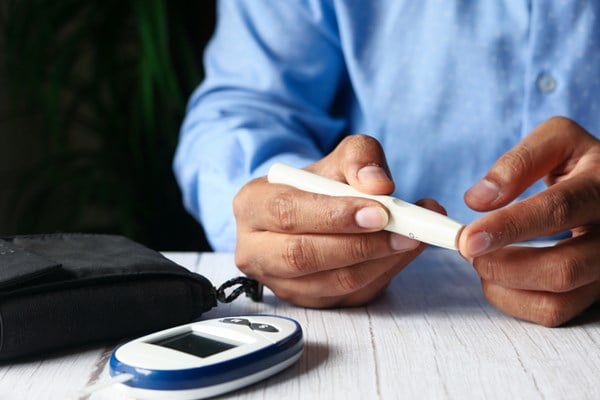We present a case of a 49-year-old man with diabetes who had sudden onset confusion and profound hyponatremia with no obvious cause. Further investigation showed his diabetes medication as the culprit of his electrolyte imbalance and altered mental status.
According to the American Diabetes Association, about 1 in 10 Americans are affected by diabetes. Treatment has advanced significantly since the first case of the disease was noted in the 16th century. One of the most recent advancements in treatment is the use of sodium glucose co-transporter 2 (SGLT-2) inhibitors, which have rapidly increased in popularity among prescribers since their FDA approval in 2013. Canagliflozin, dapagliflozin, and empagliflozin have been approved for use in treating type 2 diabetes in the United States. The primary mechanism of these drugs is to promote glycosuria through the kidneys, effectively lowering the amount of glucose in the body. The drug target is SGLT-2 in the proximal tubule of the kidney. This transporter is responsible for up to 90% of the glucose uptake in the kidneys, therefore it is a reasonable and effective target in decreasing blood glucose. Although SGLT-2 inhibitors are known for cardioprotective effects, promotion of weight loss, reduction of blood pressure, and elevation of HDL, no drug is without adverse effects. Well-known side effects of these drugs include acute kidney injury, genitourinary infections, and hypotension. One adverse effect of SGLT-2 inhibitors, though rare, is euglycemic diabetic ketoacidosis. An even less known complication is acute hyponatremia. The mechanism of the latter is not completely understood but is believed to correlate with the significant volume loss that occurs with these agents, resulting in production of antidiuretic hormone.
Case
A 49-year-old male with a history of type 2 diabetes mellitus treated with empagliflozin and sitagliptin-metformin was brought to the ED with the development of acute confusion noticed by his coworkers. According to his wife, he was in his usual state of health when he left for work that morning. The patient was unable to remember his wife’s name, recall his home address, and was unable to state where he was. He seemed unbothered by this deficit. The patient was unable to contribute any additional information to his HPI due to his altered mental status. His wife and coworkers denied any recent head trauma, accidents, history of drug abuse, renal disease, liver disease, or shortness of breath. His medical history besides type 2 diabetes mellitus included COPD, hypertension, and hyperlipidemia.
CT of his head and neck revealed obstruction of the left carotid artery which was felt to be chronic and not causative of his current symptoms. He was found to have a severe hyponatremia of 115 and was noted to be in euglycemic ketoacidosis with a serum glucose of 100 and anion gap of 24. Urine ketones were positive. His home diabetes medications were held and the patient was started on sliding scale insulin for glycemic control. Urine toxicology was negative. Blood alcohol was noted to be 80 mg/dL. His wife stated he did not have anything to drink before he left for work that day, but has a history of consuming beer in social settings. Serum osmolar gap was 22, likely secondary to alcohol. Due to suspicion of ethylene glycol or methanol ingestion, the patient was treated empirically with fomepizole, although the levels of both later came back negative. Thyroid function and cortisol levels were within normal limits. Urine osmolarity was 487 and urine sodium was 99, though this was measured after infusion of hypertonic saline.
On day 4 of his hospital stay, he was noted to have returned to his baseline mental status, confirmed by his wife. His sodium level at that time was 131. He stated that about two months prior, he had lab work done by his primary care physician, noting odium in the “high 120s.” He was observed for an additional night, remained stable, and was discharged on day 5 of his stay. Over the course of his 5-day hospital stay, the cause of his hyponatremia was ultimately linked to one of his diabetes medications, empagliflozin, an SGLT-2 inhibitor with a rare side effect of euglycemic DKA and an even more rare side effect of hyponatremia, complicated by alcohol use. He was advised to stop taking the empagliflozin but to continue his sitagliptin-metformin for management of his diabetes.
Conclusion
SGLT-2 inhibits can cause massive osmotic diuresis and intravascular volume depletion. The body’s appropriate response to this is production of antidiuretic hormone, an excess of which is capable of causing hyponatremia, as demonstrated by our case. Over the past decade, the number of new agents for controlling glucose in patients with type 2 diabetes has increased dramatically. These agents have proven to be protective to the cardiovascular system and have helped with weight loss and control of blood pressure. It is important for physicians to recognize the rare but life-threatening complications of these agents as they are being increasingly prescribed. A literature search revealed only one other case of acute hyponatremia in the setting of euglycemic DKA, therefore we felt it was necessary to share this case.
References
- Dhanasekaran M, Mehta S. SUN-699 Canagliflozin Induced Severe Hyponatremia- a Rare Life-Threatening and Poorly Understood Complication- a Case Report. J Endocr Soc. 2020;4(Suppl 1):SUN-699. Published 2020 May 8. doi:10.1210/jendso/bvaa046.165
- Persaud N. SGLT2 Inhibitors Linked to Hyperkalemia, Electrolyte Abnormalities in CKD. Renal and Urology News. https://www.renalandurologynews.com/home/news/nephrology/hyperkalemia/sodium-glucose-co-transporter-2-inhibitors-ckd-hyperkalemia-hyponatremia/. Published November 10, 2020. Accessed March 21, 2021.
- Pittampalli S, Upadyayula S, Mekala HM, Lippmann S. Risks vs Benefits for SGLT2 Inhibitor Medications. Fed Pract. 2018;35(7):45-48.
- Statistics About Diabetes. Statistics About Diabetes | ADA. https://www.diabetes.org/resources/statistics/statistics-about-diabetes. Published 2018. Accessed March 22, 2021.



